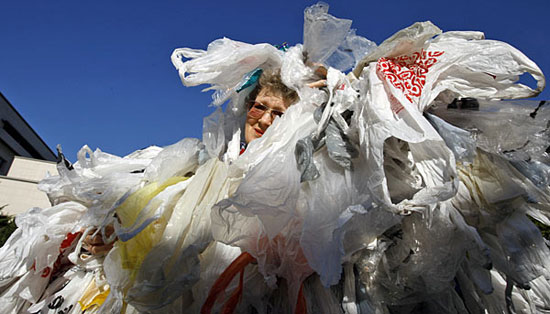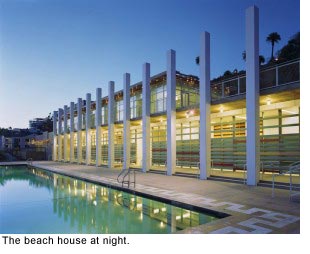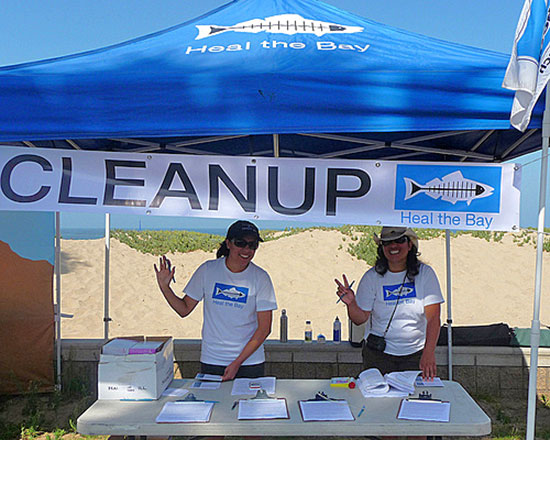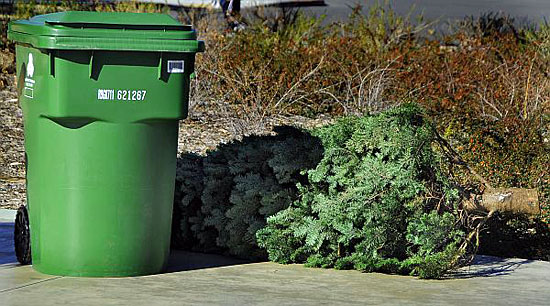Going Green
A bright idea saves energy—and jobs
April 27, 2012
 How many light bulbs does it take to save taxpayers $1.8 million annually and change the course of a layoff?
How many light bulbs does it take to save taxpayers $1.8 million annually and change the course of a layoff?
The answer lies in an innovative new Los Angeles County program that will not only upgrade more than 25,000 lights in county buildings, but also preserve the jobs of nearly a dozen county employees while generating an ongoing source of money for energy efficiency.
The initiative—a revolving fund that will pay in perpetuity for energy retrofitting in county buildings—is the fruit of a $5 million state grant underwritten by federal stimulus money and accepted this month by the Board of Supervisors.
“We’ve been trying for years to set up something like this,” says Tom Tindall, director of the county’s Internal Services Department. He says that, while the county has undertaken hundreds of energy efficiency projects, most have been essentially one-offs, paid for with California Public Utilities Commission grants, departmental savings, specified grants or other one-time revenue sources.
“This will let us do energy projects essentially forever by setting up a fund that will replenish itself,” Tindall says.
For all its conservation, Los Angeles County remains one of California’s most prolific energy consumers.
“Put it this way: We’re Southern California Edison’s biggest customer,” says Howard Choy, general manager of ISD’s Office of Sustainability.
Choy says the county spends well over $150 million a year to power the multitude of office buildings, hospitals, jails and other facilities that make up its vast holdings. The bill for electricity at the Sheriff’s Department alone is about $20 million a year, he says.
Consequently, even a small improvement in efficiency can yield big savings, which is why Tindall, Choy and others were eager to create an ongoing pool of money for projects that would help lower the county’s utility bills.
Despite the county’s financial straits, the Chief Executive Office had planned to earmark $2.2 million in seed money for the idea out of the general fund for the next fiscal year. Then, this month, the California Energy Commission stepped up. The $5 million grant the county received from the commission is expected to result in more than $18 million in utility savings over the next decade.
Under the plan, county departments will be able to “borrow” from the fund to make their buildings more energy efficient, then channel the utility savings back into it until the project’s initial cost is “repaid.” Staff from internal services will perform the work with existing county employees. Most projects, Choy says, will pay for themselves in two to four years.
“After that, the department itself will get to see the savings every year going forward, plus have a better building, and the fund will be replenished for the next project,” he says.
As a bonus, the fund will salvage the jobs of 11 Internal Services employees whose positions had been slated for termination after the state, which had been paying the county to maintain court buildings, decided to outsource.
“A lot of people out there were sweating bullets,” says Tim Braden, ISD’s general manager for facilities operations. “We haven’t been specific by name—we’ve just told them how many people would be potentially impacted—but I’ve got 32 years in this organization and I knew who they were, and know every one of them individually.
“They’re good people, family people, and there’s some who I know would lose their homes if this hadn’t happened. This energy revolving fund is a real lifesaver,” Braden says.
Choy says county department heads will have to sign off on each project, but he anticipates interest will be high. Already, he says, ISD has identified a first phase involving more than 20 county buildings in which a total of $530,000 a year could be saved just by swapping out older, 32-watt fluorescent bulbs for high-efficiency, 28-watt fluorescents.
Potential sites would include LA County+USC Medical Center and its ancillary buildings ($58,197 in potential annual savings), Twin Towers Jail ($44,067), the Hall of Administration ($37,306) and 19 other buildings. An additional pilot project, Choy says, would replace the old, dim, fluorescent lights at ISD headquarters and the county’s Lot 10 on North Broadway with 5,000 bright, energy-saving LED lamps.
A second phase of fluorescent bulb swaps, Choy adds, would yield an additional $500,000 in annual savings. And a separate round of “building tune-ups” aimed at maximizing the efficiency of air conditioning, heating and other energy equipment in a dozen buildings could shave as much as $1.2 million more from the county’s annual spending.
“Every way you look at it,” Choy says, “it’s a win-win.”
Posted 4/27/12
Ocean-friendly gardening starts here
February 6, 2012
Malibu made a prizewinning environmental “cleaning machine” out of a vacant lot that had been the community’s annual chili cook-off site. You don’t need to own a spread like Legacy Park, though, to help curb urban run-off.
Paul Herzog, coordinator of the Surfrider Foundation’s Ocean-Friendly Gardens Program, recommends “CPR”—conservation of water, permeability in your soil and retention devices such as rain barrels and rain gardens—to homeowners who would like to build water cleanliness into their landscaping.
And even small changes can help. Here are few:
Apply mulch. “It’s a simple thing to do, and it makes a big difference,” says Herzog. “Some areas even offer mulch from the city for free.” Mulching keeps weeds down, and, more importantly for the oceans, captures and holds water that might otherwise make its way down to the beach.
Redirect your rain gutter onto your landscape. Don’t let water wash over your roof and then send it directly into a storm drain. Turn your downspout or, if necessary, buy an attachment at the hardware store to send that water onto your lawn or garden, where it’ll do more good.
Reset your irrigation timers when you reset your clocks. You know how you spring forward and fall back for Daylight Savings Time? Well when you reset your clocks in the fall, adjust your irrigation to account for the rainier winter weather. And when spring arrives, set them again for the drier summer days.
Go native. Think about what naturally grows here the next time you landscape. Native plants don’t have to be dull. (Click here for ideas.) “Monarch butterflies journey from Canada to Mexico and there’s only one plant that baby Monarchs will feed on,” he says. “Milkweed. And some varieties are native to this place.”
Posted 2/6/12
Make like a tree, and compost
December 30, 2011
The stockings are down, and all that remains of those delicious holiday cookies are a few lonely crumbs. It’s probably time to figure out what to do with that rapidly-drying tree.
No matter where you live in Los Angeles County, there are easy ways to give Christmas trees a green retirement by turning them to mulch.
For unincorporated areas, the L.A. County Department of Public Works will pick up trees curbside through January 13, on normal collection days. The city of L.A. will take trees placed in or beside green waste bins; see the Bureau of Sanitation’s website for details. For other cities and a list of sites that accept drop-offs, visit www.cleanla.com or call 1 (888)-CLEANLA.
Trees should be stripped of all lights, ornaments, tinsel, nails and anything else that might be hanging on.
Besides cleaning house and protecting the environment, there’s another reason to recycle your tree—preventing fires. According to the United States Fire Administration, dry or neglected Christmas trees start 240 fires annually, causing fatalities and millions in property damage.
This video shows how fast a scotch pine can transform a family room into an inferno. So play it safe and recycle!
Posted 1/4/12
Bag ban coming to a minimart near you
December 14, 2011

Supporters of plastic bag ban rally before Board of Supervisors' vote last year. Photo/Los Angeles Times
The Los Angeles County Board of Supervisors may have officially declared Thursday to be “A Day Without A Bag” in the county, but at the 7-Eleven on Las Virgenes Road, the holiday hasn’t exactly taken hold.
“We go through more than a hundred plastic bags a day,” says store manager Andrew Kassar. “People rarely—well, actually, I’d say people never come in here and use their own bags.”
That will change January 1, as a number of municipalities, including Los Angeles County and the City of Calabasas, where Kassar’s store is located, swing into the second phase of local bans on single-use plastic bags.
The first phase, in effect since July, stopped the distribution of the light, ubiquitous—and polluting—bags in large supermarkets and pharmacies. The ordinance allowed these retailers to charge a dime apiece for paper bags to cover the costs of compliance and of stocking the paper bags themselves.
The next phase extends the same rules to smaller drug stores, convenience food stores and smaller retailers and grocers. To that end, the county Department of Public Works this week will be dispatching teams of “Eco Elves” to pass out free reusable bags, while supplies last. (Click here for a list of dates and locations throughout the county.)
“We’ve been notifiying our customers,” says Franco Hasroun, manager of Calabasas Liquor and Market. “Most of the bags we use are plastic, though, so we’ll see how it goes.”
The county’s bag ban covers only stores in unincorporated areas, but it was written to allow the county’s 88 incorporated municipalities to extend it by easily enacting ordinances of their own.
Malibu had a ban in place when the county ordinance was written but since then, Long Beach, Santa Monica and Calabasas have cracked down on the proliferation of single-use bags. Now bans are in various stages of passage in more than a half-dozen of the county’s other cities, including the City of Los Angeles.
The California Supreme Court made passage of such laws easier for cities this summer, ruling that cities could forego lengthy and expensive environmental impact reports in determining that their ecosystems would be better off without the proliferation of single-use bags.
That lawsuit, brought by a pro-plastics organization against a Manhattan Beach ban, had been closely watched by cities statewide. The court decision unleashed a flood of municipal legislation. In Manhattan Beach, the disputed ordinance was reinstated and will be implemented on January 14.
However, the plastic bag industry has continued to push back. In October, for example, the South Carolina-based plastic bag maker Hilex-Poly and four residents filed suit against the county, arguing that the 10-cent charge for paper bags violates a new state law that reclassifies local fees as “taxes” and requires a two-thirds majority vote to raise them.
Pat Proano, assistant deputy director for the Department of Public Works’ environmental programs division, says that the few complaints he has received about the first phase of the county ordinance were from callers “who were concerned that this was a new county fee of some sort.”
“But it isn’t,” Proano says. “The ten cents being charged by the store is retained by the store—it doesn’t go to the county.” The lawsuit is pending in Los Angeles County Superior Court, with action expected sometime next year.
In the meantime, store managers say, the bag ban—so novel when it was passed this summer—is becoming an increasingly mundane fact of life.
“Mostly, everybody just brings their own bags now,” says Cynthia MacNeil, front end manager at the Albertson’s supermarket in Calabasas. “It took a couple of months for people to get into the habit, but we don’t hear many complaints these days. I think they’re just used to it now.”
Posted 12/13/11
Steering clear of bad fertilizer
November 16, 2011
 Ah, November. The days are shorter, the light is sharper, and if you breathe deeply, you can almost smell the—whew! Maybe let’s not smell the air today.
Ah, November. The days are shorter, the light is sharper, and if you breathe deeply, you can almost smell the—whew! Maybe let’s not smell the air today.
Yes, fall is fertilizer season in Southern California. And as the autumn air grows pungent over the lawns of Los Angeles County, homeowners are being reminded to spread the wealth responsibly.
“The same nutrients that make your grass grow also will make algal blooms grow if they wash down the storm drains and into the waterways,” notes Susie Santilena, an environmental engineer in water quality at Heal the Bay.
The nitrogen and phosphorus that are so good for plants may contribute to toxic red tides in the ocean and can make algae run wild in freshwater areas like Malibu Creek, creating dead zones as the green scum blocks sunlight and inhibits the growth of other plants and animals, Santilena says.
The algae even wreaks havoc when it dies, because it sucks oxygen out of the water as it decomposes, a process known as eutrophication.
“When you don’t have oxygen in your waterway, your marine life suffocates and you get fish die-offs because there’s no dissolved oxygen in your water,” she says. “And there are aesthetic issues—algae growth can create pond scum, which is just kind of gross to look at in waterways.”
So what to do? It’s tricky, environmental advocates say, because while organic fertilizers such as steer manure and worm castings have advantages that chemical fertilizers don’t share, both can create destructive runoff if they aren’t applied carefully.
Manure tends to adhere to the soil better, so its runoff is less concentrated, but it also can introduce harmful bacteria into the water.
“I have a personal preference for worm castings for multiple other benefits, including environmental impact of production, but they can be overused like the other fertilizers,” says Santilena, noting that worm castings also can be hard to obtain in sufficient quantities for large-scale application.
“It’s how and when the fertilizer is applied that matters most.”
Environmental consultant and master gardener Curtis Thomsen, who conducts the Countywide Smart Gardening program, recommends a half-and-half mix of compost and fertilizer, sprinkled lightly over a lawn that has been aerated.
If you don’t have compost, he adds, there are sites in Los Angeles that offer free mulch that you can shred to make some and low-cost bins can be purchased at Smart Gardening workshops countywide. “The worms smell the organics in it and pull them down, which allows water to penetrate deeper,” he says, adding that compost is especially good for getting nutrients to the roots of thick grasses that tend to thatch. Also, he says, if you add that mixture to your garden plot this fall, it will improve yields, reduce disease in the soil and produce healthier, stronger plants next year.
Meanwhile, Rudy Valenzuela, regional grounds maintenance supervisor for the county Department of Parks and Recreation, notes that the county aerates and fertilizes its park lawns with a commercial chemical blend of nitrogen, potassium and iron that is geared to its sturdy mixture of grasses. He notes, however, that the crews wait until after dark to water and then do it judiciously, turning off the sprinklers after about 15 minutes per station to avoid runoff.
Both approaches keep in mind the need to keep your fertilizer on your own grass. Here are some dos and don’ts from Heal the Bay:
– Do use fertilizer as sparingly as possible, no matter what type you use. Less is more.
– Don’t ever apply fertilizer right before a rainstorm, and never overwater after applying. Too much water will just lift your fertilizer and wash it off.
–Don’t apply to highly compacted or steeply sloped grasses, which also prevent fertilizers from fully soaking into the soil.
–Do consider creating a rain garden, using rain barrels and other containers that will keep rain in your hard and out of the street.
Posted 11/16/11
Bag Ban II: Pasadena? Culver City? L.A.? [updated]
June 30, 2011

“Less paper, no plastic.” Think of it as the new mantra for Los Angeles County’s checkout lines.
Starting July 1, stores in the county’s unincorporated area will help curb a longstanding environmental problem by charging a dime each for paper bags and halting the distribution of single-use plastic bags altogether. The goal? To wean consumers away from those disposable, ubiquitous—and polluting—grocery bags.
But the historic ban on single-use plastic bags, passed last year by the Board of Supervisors, had a secondary goal—to inspire similar measures in the county’s 88 incorporated municipalities.
The new county ordinance, which will take effect in two phases—the first for large stores, the second in January for smaller retail outlets—will cover an area that is home to more than a million consumers, but its first phase will only affect about 70 supermarkets and other big establishments, most of which are concentrated in northern L.A. County and the San Gabriel Valley.
So as shoppers in places like Athens and Altadena get ready to bring their own bags to market, how’s that domino effect progressing? And what about the county’s biggest concentration of shoppers, the City of Los Angeles?
“We think there’s been great momentum,” says Kirsten James, water quality director for the Santa Monica-based Heal the Bay, which advocated the bag ban. “Since the county moved forward, we saw the City of Calabasas adopt the same ordinance, which also goes into effect in July.
“We also saw the City of Santa Monica adopt a pretty similar ordinance that will go into effect in September. We also saw Long Beach adopt the same ordinance, with a couple of slight modifications. They start in August, so they’ll be on board soon as well.”
The City of Malibu passed the county’s first ban on single-use plastic bags in 2008. A Manhattan Beach ban the same year was challenged in court by a pro-plastic bag group because the city did not conduct a formal environmental impact report before determining that fewer plastic bags would be good for the environment.
Such reports, which document the effects a proposed law will have on the environment and community, can be costly and time consuming, but are required by the California Environmental Quality Act, the ban’s opponents noted. The Los Angeles County ordinance, which has not been challenged so far, not only included an EIR, but drafted it so that cities within the county could simply build on the county’s environmental analysis with individual addenda, as opposed to starting from scratch, which would be much more expensive. The Manhattan Beach appeal is now before the California Supreme Court, and a ruling is expected by mid-August.
“Meanwhile, other cities are pondering the idea,” James says, and at least two expect to see local ordinances before their city councils as early as July.
- West Hollywood’s City Council, for instance, voted in February to begin compiling EIR data for a draft plastic bag ordinance, and the city’s climate action plan indicated in April that the city is monitoring the Manhattan Beach litigation for guidance on how best to proceed. “The City Council has twice supported efforts to ban single-use plastic bags from use in the City of West Hollywood,” notes Councilmember Abbe Land, who co-authored both items. “We are continuing to move forward with our efforts to create an effective ordinance, working with our City Attorney and our Community Development Department to ensure we are compliant with EIR requirements.”
- In Pasadena, the city’s Environmental Advisory Commission has been gathering public comment on a proposed ban for nearly two months. Ursula Schmidt, sustainability affairs manager for the city, says the ordinance under consideration is modeled on the county’s and has received three letters of opposition and more than 200 letters of support. Though the local Chamber of Commerce expressed concern about local stores being placed at a competitive disadvantage if Pasadena businesses have to charge for paper bags and adjacent communities don’t impose such a ban on their stores, she says, the Chamber’s board voted not to take an official position, and several nearby cities, including Glendale and South Pasadena, have contacted her for information about Pasadena’s proposed measure. The commission is expected to vote as soon as July 19 on a recommendation, which would go to the City Council in September, she says.
- In Culver City, Vice Mayor D. Scott Malsin says public support for a ban has been building for some time now, and the city attorney has been working on a draft ordinance to bring to the City Council “within the next month.” It, too, is modeled on the county’s ban, and builds on the county’s EIR data. “We’ve really appreciated the county’s leadership on this,” says Malsin. “Had Culver City not been able to use the county’s EIR data, we probably would not have been able to move forward with it at this time.”
- Inglewood also is drafting a proposed plastic bag ban for consideration later this summer, based on the county ordinance, with an addendum to the EIR, city staffers confirm.
- The City of Los Angeles, meanwhile, is the big player on the landscape. One city report estimated that consumers in just the city use 2.3 billion single-use plastic bags annually. Karen Coca, division manager for citywide recycling with the city’s Bureau of Sanitation, says a staff analysis on a proposed ban is being finalized and a report detailing policy options is expected to go to the City Council some time in July.
In some respects, the city’s strategy has already been decided. The City Council agreed in 2008 to ban single-use plastic bags by 2010 unless the state addressed the issue. The California Legislature rejected a statewide ban last year amid a $2 million-plus industry lobbying campaign.
Coca says that, aside from the pending legal questions surrounding the Manhattan Beach case, the city’s main challenge appears to be enforcement. Los Angeles has some 7,500 retail outlets that would be impacted by an ordinance like the county’s, more than seven times the number of stores that will be affected in unincorporated Los Angeles County when the county ordinance is fully implemented in 2012.
Pat Proano, the county Department of Public Works’ assistant deputy director for the environmental programs division, says the county Department of Health and the Agricultural Commissioner will enforce the county ordinance, since they already conduct regular inspections of supermarkets and other retail stores.
However, he says, “there’s a cost associated with that,” and it’s unclear whether the county would have the resources to enforce bans for other municipalities. In any case, Proano adds, ”this is a milestone for L.A. County and we are ready for implementation of the plastic bag ban.”
Posted 6/23/11
Updated 7/14/11: The California Supreme Court on Thursday made it even easier for municipalities to join in Los Angeles County’s new plastic bag ban, ruling that they can clamp down on the proliferation of single-use plastic grocery bags without necessarily going through lengthy and expensive environmental impact reports.
The unanimous court decision, in a lawsuit brought by a pro-plastics organization after Manhattan Beach tried to ban plastic bags in 2008, had been closely watched by cities, including the City of Los Angeles, after an attempted statewide ban went down to legislative defeat amid heavy lobbying from the chemical industry last year.
Environmental groups rejoiced. “This basically opens the flood gates,” says Kirsten James, water quality director for Santa Monica-based Heal the Bay. “This is a hugely significant ruling and it opens the door for cities to move forward all over the state.”
This beach beauty’s a bargain
May 25, 2011
 If you’d like to splash and lounge like a Gilded Age big shot on Santa Monica’s Gold Coast this weekend, have we got a tip for you.
If you’d like to splash and lounge like a Gilded Age big shot on Santa Monica’s Gold Coast this weekend, have we got a tip for you.
The Annenberg Community Beach House, owned and operated by the City of Santa Monica for public use, will be opening its pool for the long Memorial Day weekend. The pool’s actual season runs June 25-Labor Day, so this is a three-day chance to get an early jump on summer—while savoring one of the choicest beachfront locales anywhere.
The pool is just one amenity at the 5-acre oceanfront property, once the site of Marion Davies’ fabled beach mansion and playground for the likes of Charlie Chaplin, Greta Garbo, Clark Gable and, naturally, William Randolph Hearst, who built the humble 100-plus-room beach shack in the 1920s for Davies, his longtime mistress.
The property opened to the public two years ago, after previous incarnations as a grand hotel and the Sand & Sea Club. (The mansion was torn down in 1956, but Davies’ guest cottage is still on the site and tourable.) Funding from the Annenberg Foundation enabled the city of Santa Monica to clean up hazardous materials on the property, restore the pool and create an architecturally significant compound with some serious environmental cred. The Beach House has LEED Gold certification and runs on wind-generated power, while water for the pool and “splash pad” area are heated by solar collectors.
 Beach real estate this choice doesn’t come along often, and pool admittance is on a first-come, first-served basis. So if you’d like to secure a place in the sun this weekend, a little advance planning may be required. Same-day pool passes will go on sale starting at 9:30 a.m. on Saturday, May 28, Sunday, May 29, and Monday, May 30. Admission is $10 for adults, $5 for seniors over 60, $4 for children under 18. Reservations also are available online starting three days in advance.
Beach real estate this choice doesn’t come along often, and pool admittance is on a first-come, first-served basis. So if you’d like to secure a place in the sun this weekend, a little advance planning may be required. Same-day pool passes will go on sale starting at 9:30 a.m. on Saturday, May 28, Sunday, May 29, and Monday, May 30. Admission is $10 for adults, $5 for seniors over 60, $4 for children under 18. Reservations also are available online starting three days in advance.
The Annenberg Community Beach House is located at 415 Pacific Coast Highway, north of the Santa Monica Pier. (Directions are here.) Parking is $8 on the weekends, but you can avoid the charge—and get into the eco-friendly spirit of the Beach House—by getting there on bicycle, via the Pacific Coast Bike Trail.
Nan Friedman, the Beach House manager, said a number of “summer-inspired” classes are coming this year, exploring everything from stand-up paddleboarding and open ocean swimming to sand games such as disc golf.
That ever-evolving list of featured classes and cultural attractions is another reason to discover the facility. “Oddly enough,” Friedman said, “there are people from all over the world who know about the Annenberg Beach House and we also have people who live locally who say, ‘I drive by every day and I never knew what it was.’ ” If you’re one of them, this just might be your weekend to find out.
Posted 5/25/11
Get clean and green for Earth Day
April 13, 2011
 It’s time for spring cleaning—and not just in your attic. With Earth Day almost upon us, April is the perfect month to scrub, tidy and freshen up your local environment.
It’s time for spring cleaning—and not just in your attic. With Earth Day almost upon us, April is the perfect month to scrub, tidy and freshen up your local environment.
On a global level, Earth Day organizers this year have made “a billion acts of green” a theme of the observation. The object is to register a billion pledges toward a more sustainable planet in anticipation of the United Nations’ 2012 Earth Summit in Rio de Janeiro.
But locally, Southern California also has many ways to pitch in, from beach cleanups to e-waste recycling.
Here are just a few ways you can help make your backyard sparkle this spring:
–Get in on Heal the Bay’s “Nothin’ But Sand” beach cleanup day April 16 in Torrance and the Pacific Palisades. Volunteers will get a free reusable water bottle, while supplies last, and—this weekend—a free pass to the Santa Monica Pier Aquarium. (Don’t forget to sign their waiver form.)
–Got an old mattress or porch sofa in need of disposal? The Los Angeles County Department of Public Works suggests that you get rid of it responsibly—during one of the county’s many bulky item clean-up days.
–And don’t forget to do the same with your old electronic equipment. Cal State Northridge is sponsoring a big e-waste recycling event on April 22 as part of its Earth Day observation, and DPW has an ongoing collection schedule that will take e-waste off your hands.
–Join the Friends of the Los Angeles River for The Great L.A. River Cleanup, happening at more than a dozen sites along L.A.’s favorite waterway on April 30 from 9 a.m. until noon.
–Looking for something a little livelier? Earth Day celebrations abound this month. Pasadena has one this weekend. So does South L.A. So does CSUN, which, among other things, invites you to come pick oranges on Sunday morning for a local community food program. Topanga’s will open with yoga and close with a drum circle April 22-24.
–Or go really big and check out the Go Green Expo at the Los Angeles Convention Center this weekend. They’ll have kids’ activities, booths, eco-celebrities such as Ed Begley Jr., Mariel Hemingway and Captain Paul Watson of Animal Planet’s “Whale Wars”.
Posted 4/13/11
A new kind of green incentive
March 10, 2011
 Sure, you consider yourself an environmentally conscious consumer doing all you can to reduce your carbon footprint. But spending a few dollars on recyclable grocery bags is one thing, undertaking a costly upgrade of your home to make it more energy efficient is quite another.
Sure, you consider yourself an environmentally conscious consumer doing all you can to reduce your carbon footprint. But spending a few dollars on recyclable grocery bags is one thing, undertaking a costly upgrade of your home to make it more energy efficient is quite another.
Now, however, Los Angeles County can help you put your wallet where your heart is.
The county’s Office of Sustainability is rolling out a program called Energy Upgrade California, designed to reward homeowners with rebates and incentives when they make green improvements to their homes. The program’s goal is to retrofit 18,000 homes while creating 2,000 green-collar jobs and reducing greenhouse gas emissions by 20,000 metric tons.
To drum up interest and participation, a Home Energy Makeover Contest will be held this spring, with winners receiving up to $50,000 worth of energy upgrades to their homes.
Energy Upgrade California—an alliance between L.A. County, cities within the county, Southern California Edison and Southern California Gas Company—is being underwritten by funds from the American Recovery and Reinvestment Act (ARRA). The program advocates a “whole house” approach designed to maximize energy savings in both dollars and kilowatts.
Homeowners can take advantage of the program simply by registering online. Energy Upgrade and its partners take it from there.
First, contractors meet with homeowners and conduct a computer modeling of their houses to determine the most efficient and effective level of upgrades. The contractors then make the actual improvements and apply for all government and utility rebates on behalf of the customers. These basic upgrades usually include everything from sealing windows to insulating walls to installing energy efficient water heaters and fixtures.
Additional home upgrades are available upon request, including solar power installations or “green upgrades” that will certify the eco-friendliness and efficiency of your home with a GreenPoint rating.
The initial cost of upgrades can range from $2,000 for a basic package to $8,000-$15,000 for an advanced one. Rebates can total up to $4,500 depending on how much work you have done and how much energy is saved. For the truly committed, spending about $50,000 will bring a house close to zero energy consumption.
Between the rebates and savings from reduced utility bills, it’s possible to partially or completely recoup the initial investment. For $1,000 in improvements (after rebates) it is expected that a homeowner will save 10% in utility costs. The market value of your house will also improve. For more complete examples and explanations see “Meet the Sanchez Family” on Energy Upgrade’s website, or watch their video vignette.
Contractors who want to participate in the program must complete a training workshop, and meet other requirements. To perform services beyond basic house-sealing and insulation, they must be certified by the Building Performance Institute (BNI), a nonprofit organization that works with the Department of Energy and the Environmental Protection Agency to develop home energy efficiency methods.
Meanwhile, to enter the Home Energy Makeover Contest, visit the website by March 31 and be ready with your name, address, phone number, utility provider, information about your home and last years’ utility bills. You must be over 21 to enter and own a home located in Los Angeles County.
Winners will be selected based on their capacity to save energy and serve as examples for future energy-saving homeowners. Five winners will be selected to receive $10,000 each in free improvements. One grand prize winner will receive $50,000 worth of improvements. Complete details on eligibility and prizes are available online.
Energy Upgrade California represents the latest in a nationwide push to protect the environment and create sustainable jobs. There have been some setbacks along the way, but with cooperative efforts like this we may be able to preserve our planet and our pocketbooks at the same time.
Posted 3/10/11













 405 bridge work causes a stink
405 bridge work causes a stink
